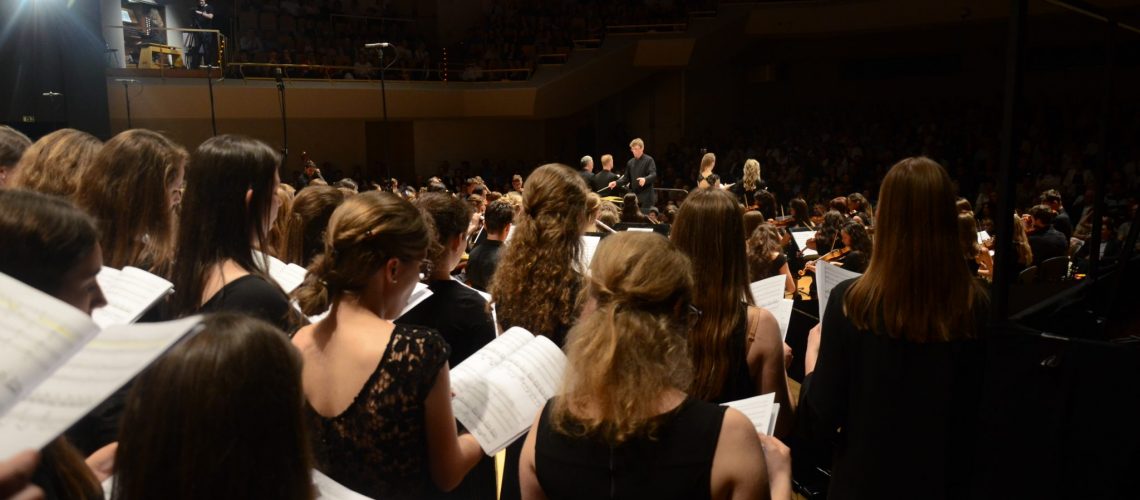 Cordially invited to the traditional concert, which will take place on Saturday, 11th May 2019 at 6.00 p.m. in Gallus Hall in Cankarjev dom (Ljubljana). The choir pyramid of St. Stanislav’s Institution, which is well known in Slovenia and abroad, will perform a variety of songs and compositions ranging from Slovene folk songs to ever green pop songs in new adaptations by T. Bec and D. Močnik. The first performance in Slovenia of John Rutter’s Mass of the Children will be carried out by 400 singers in nine choirs and the symphonic and string orchestra will round up the solemn concert. Welcome!
Cordially invited to the traditional concert, which will take place on Saturday, 11th May 2019 at 6.00 p.m. in Gallus Hall in Cankarjev dom (Ljubljana). The choir pyramid of St. Stanislav’s Institution, which is well known in Slovenia and abroad, will perform a variety of songs and compositions ranging from Slovene folk songs to ever green pop songs in new adaptations by T. Bec and D. Močnik. The first performance in Slovenia of John Rutter’s Mass of the Children will be carried out by 400 singers in nine choirs and the symphonic and string orchestra will round up the solemn concert. Welcome!
Easter Greetings 2019
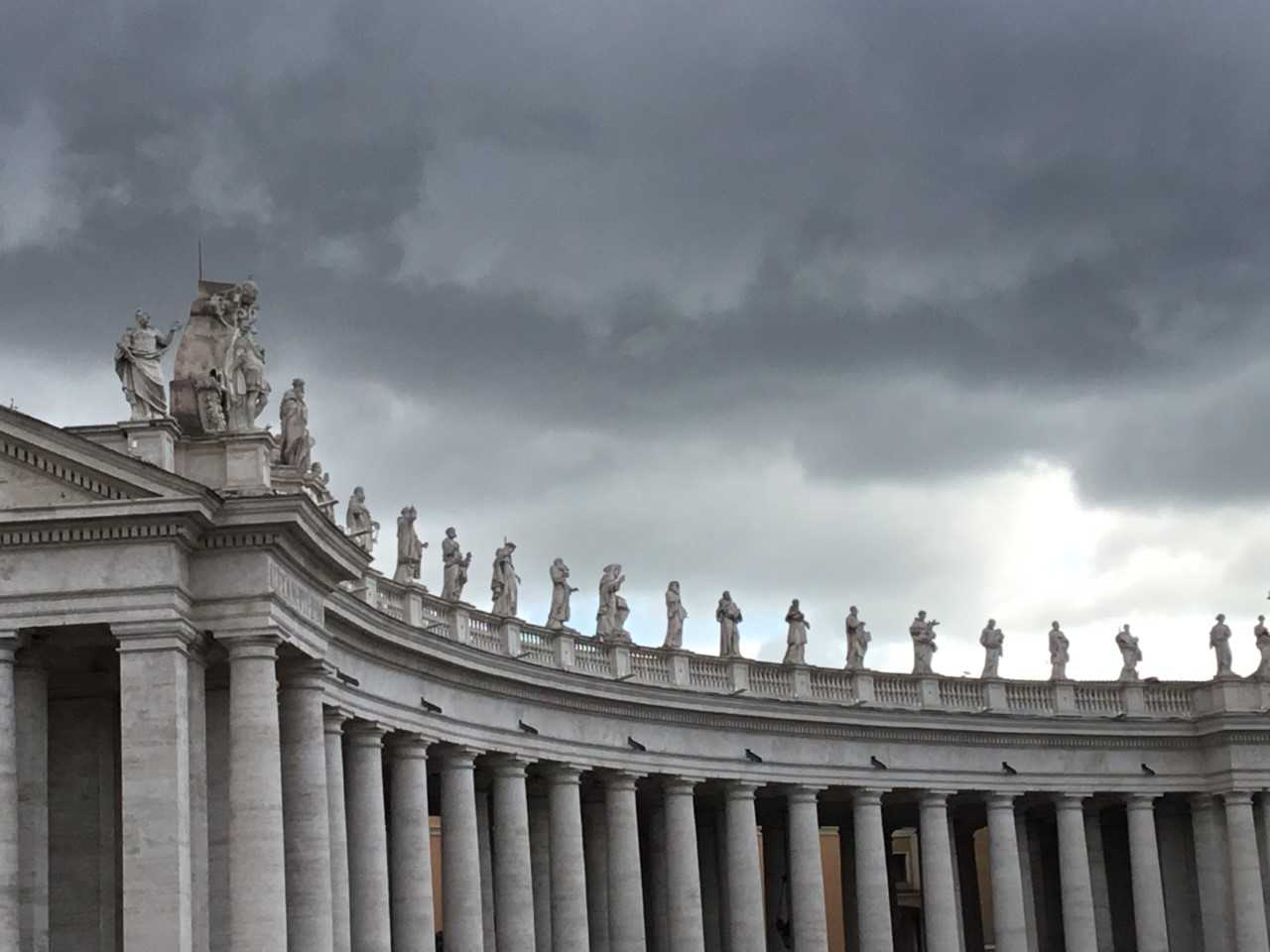
The stone which the builders rejected;
the same is become the head of the corner.
This is the Lord’s doing:
and it is wonderful in our eyes.
(Ps 118:22-23)
May the celebration of Easter open our eyes to the light of the Risen, so that our lives may reflect the hope that he bestows upon us! Felix Alleluia!
Anton Česen, M. A., Director
The Graduates in Rome – “Short Trip Around the Planet Seeing all the Must Sees”

The fourth years and 15 accompanying teachers traditionally spent some inspiring days from 10th -15th April 2019 before the holy week in Assisi, Rome and Ostia. The entire trip reflected magnificently the two faces of our school’s mission, namely the Catholic and classical one. In ancient Greek catholicos means concerning the whole, universal, general and this meaning does justice to what we admired there: arts, life and people. This time John Cronin, Math teacher and a volunteering native speaker at the DCG from the USA gives an account on how he experienced the trip to Rome.
“When I first heard about the trip, I asked if I could go thinking that a trip to Rome would be cool. To my pleasant surprise, I had no idea what was in store for me. This trip was absolutely epic. I was fortunate enough to have my wife with me, which is always a bonus. Rome is a lovely city with much to see and do, and my wife, an alumna of the DCG, did tell me that excursions with SKG are busy affairs with a packed program of activities and places to go. This I found out was an understatement. I felt with all we saw we did a short trip around the planet seeing all the must sees. The different places we went to, the history of what we learned, the significance of each destination was explained in great detail by what seemed to have been expert historians. I feel as if I read 5-10 books about Rome, and I still wouldn’t have learned half of what I was told during this trip.
There are so many highlights of our days in Italy, but when you can include the bus rides as enjoyable based on the conversations and banter between the people on the trip, you know there was something special. From the prayers to the details about our day, to the conversations with the students, Lily or Martin, it was all enjoyable. Even Martin’s control of the weather was unimaginable. I can think of many bus rides I have had in my life, but none were as much fun and intellectually stimulating as the rides we had during this trip. Surprisingly my wife was shocked with some of the conversations she heard. She told me that after a long day of learning the students were having discussions about what they learned and looking up information on the internet or in a Rome book they bought to find a deeper understanding. Our main guides on the trip, Lily and Martin had such chemistry and knowledge it seemed as if we were getting guided by 2 saints. There were many experiences that helped reignite a passion for faith within myself that seemed to be burning with a dim flame. Going to countless churches, chapels and basilicas, there were endless opportunities to pray and deepen my faith. I was stunned by seeing a church within a church thanks to Saint Francis, but after being explained the significance, I felt a world of joy and relief when I entered the inner church. In my life, this was one of the most profound religious moments I can recollect. As the days continued, the only complaint I could find was the pain of all the walking. The service, people and food at the hotel were spot on. The drivers of the bus were professional and timely. The bus was immaculate and very modern.
One of the destinations we went to towards the end of the trip is where I had to fight back the tears from running down my face. It was a perfect ending to a wonder trip. We went to Centre Aletti, the workshop of one of the famous Mosaic Artists and Jesuit father Marko Ivan Rupnik, where we got a wonderful tour of his great workshop by Lucija Rožman, another alumna of DCG. It was astounding to see the chapel that was built, to learn about the unification of the East and West Churches with the help of Art, and to get a special tour through the workshop of the artists with details of their current and past works. Even the training process of the artists was impressive. However, after the tour concluded we were given free time to eat dinner and explore Rome about 2 hours before meeting at the bus to depart Rome. Several students left, but a few stayed behind and went into the Chapel. My wife and I were tired and sitting on the stairs, but then we heard music from the Chapel. We went inside to see the students singing, what I assume to have been religious hymns. There was no mass, no priest with a sermon, no instruction from any adults or anyone. They had a guitar, a cell phone and maybe about 15-20 students and they sat in the chapel singing praise to God. Between songs, there was silence. There was no chatter, no meaningless conversation or stories with laughter.
I figured listening and seeing the Pope’s mass during Palm Sunday would be the most inspirational and holiest time of our voyage. However, this just joy and worship the students were doing during their free time when we were all hungry and exhausted was breathtaking. Even though I didn’t understand the words or get the meaning of the songs they chose, their angelic voices and passion in every note echoed through my heart as if Jesus Himself was opening me up to His word. Alas, after all this, there was a final silence when we knew it was time to leave. It seemed like both an eternity and only seconds when we finally left the Altar. The paradox in time is nothing I experienced before and nothing I can really describe other than one of the most powerful moments in my life. I can tell I am a better man after this trip then I was before and look forward to seeing St. Stanislav’s Chapel in the school with a different appreciation.”
After this trip, my curiosity is peaked to know when I will I get the honour and privilege of going with DCG again. /John Cronin/
Takeaki Hori, vice president of PEN International, Visits The DCG
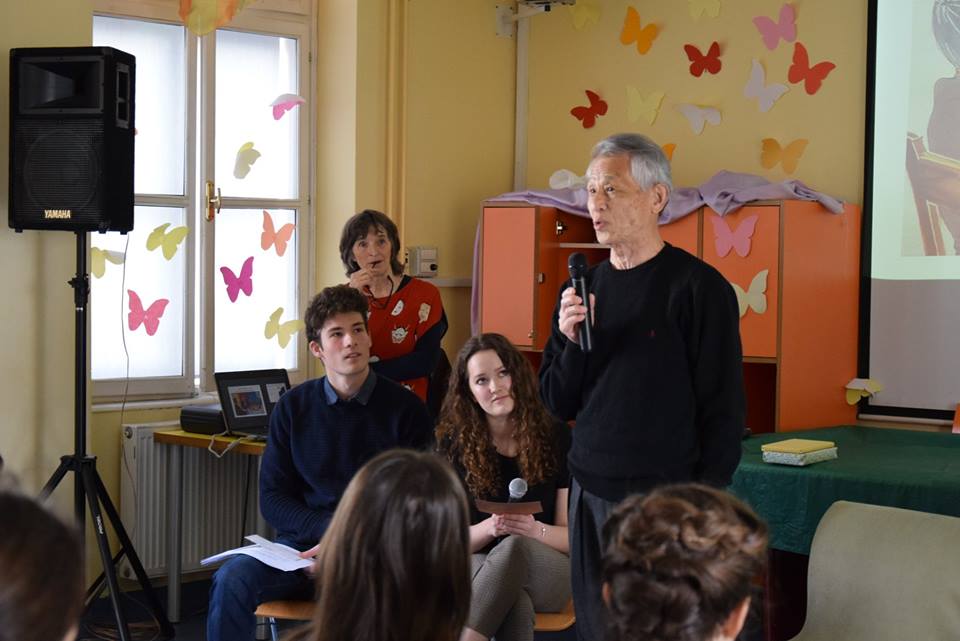
Takeaki Hori paid a visit to St. Stanislav’s institution on 27th March 2019 to talk to third years and student writers of school’s literary magazine. Mr Takeaki is a professor at Fudjivara Joshiharu University, journalist, Japanese PEN ex-president, haiku researcher, anthropologist and environmentalist. Firstly, Mrs. Ifigenija Zagoričnik Simonović, the Slovenia PEN president, presented PEN international and its mission. PEN is an international organisation of poets, essayists and novelists, (more and more journalists are joining in), which was established in London, 1926, after the World War I, to help novelists who were in detention or were persecuted. Each year an International meeting is organised in Bled, Slovenia. Literary artist and PEN members from different countries discuss contemporary world situation, related issues and enjoy the calm environment of natural beauty.
A haiku appears to be an important subject in Mr. Hori’s life. It is a short form in traditional Japanese poetry. It consists of 17 syllables in three phrases of 5, 7 and 5. Everyone holds Matsuo Basho (1644-1694) up as an example how to write a perfect one. He was a pioneer with haikus; he transformed an already existing form of a Japanese poem, saying that everything good has its limit. Mr. Hori believes that a man can write a good haiku only when he takes time for it. Since it always reflects any author’s inner experience, it is always good for him, but not necessarily for the public. He explained that “haiku is philosophy and science. It depends on each individual, how he approaches to it and how deep he can dive in, always opening wide dimensions of its comprehension.”
Mr. Hori works on many other fields as well. Currently he focuses on historical studies about the end of WWII when Japan was marked with Hiroshima and Nagasaki catastrophe. He strives to stop the use of nuclear weapons; therefore, he also encourages people to create haikus for peace. Besides attending PEN International Meeting this year in Slovenia, he also collaborated with PEN at the opening of Hiroshima and Nagasaki: Pain and Courage Exhibition in the National Museum of Contemporary History in Ljubljana. At PEN they are willing to promote peace and want to assert the right for peace. This is also the reason why they opened the exhibition on 25th March 2019. To show that it is of utmost importance to listen to war victims, let them talk about the atrocities and learn what happened to them. Only then will we be able to prevent another outburst of such or even worse type. Mr. Hori, who experienced the catastrophe as a child, wonders repeatedly: “Why did it happen? Why can’t we live in peace, without fear of being attacked with nuclear weapon?” He presented the work of ICAN, an international non-governmental organisation, which attempts to abolish nuclear weapons and was awarded the 2017 Nobel Prize for peace. He is proud of its focus on the victims and their stories, not only on the historical background, pictures and objects, which could be seen in museums. /Lucija Stopar, year 4/
The DCG Team Pecunia Wins the Generation €uro Competition and is to Meet Draghi in Frankfurt, Germany
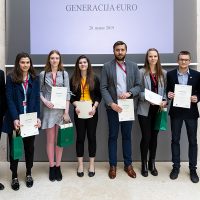
The team of the Diocesan Classical Gymnasium students with Amber Bervar, Tinkara Toplak, Vita Hrast, Jerneja Koren and Nik Smerkolj, is the winner of the Slovene part of The European Central Bank (ECB) international competition entitled Generation €uro. It took place on 28th March 2019 in the Bank of Slovenia, joining 21 teams from 11 Slovene high schools from all over the country. This is the third win for the DCG team at this competition.
The competition offers an opportunity to the generation growing up with the concept of Euro, to learn about the monetary policy, its relationship with economy and broadens the knowledge of central banks functioning. The jury recognised in the team’s presentation profound and conceptual understanding of a rather complex problematics of the Eurozone monetary policy. As a reward, the DCG team will travel in May with their mentor, Tadej Rifel, Ph. D., and the representatives of the Bank of Slovenia to the ECB Seat in Frankfurt. There, Mario Draghi, the President of ECB, will congratulate the DCG team as well as all other winning teams form EU member countries. /Lily Schweiger Kotar/
Exchange with Kanto Daiichi High School Tokio, Japan

Last school year The Diocesan Classical Gymnasium and Kanto Daiichi High School had an exchange and it went really well so it will take place again from 27th March – 2nd April 2019. Fifteen Japanese students a couple of the teachers will spend a week in Ljubljana.
The exchange will be educational and will involve bond making as well. The exchange will include visits to a lot of historical and natural attractions and some sightseeing. We will have a short city tour of Ljubljana, visiting the beautiful sights of the capital city. There will be a one-day excursion where we will visit Logarska Valley, Celje and Celje Castle and stop at Trojane to have some doughnuts. Some time will be dedicated for Japanese and Slovene students to hang out with host families and experience Slovene way of life. We expect to learn a lot about Japan, brush up our English and improve social skills. Students of the DCG are all really looking forward to the exchange. /Vesna Bukovnik and Neža Tomažič, year 2/
The Academic Society Unitas Würzburg to Visit St. Stanislav’s Institution
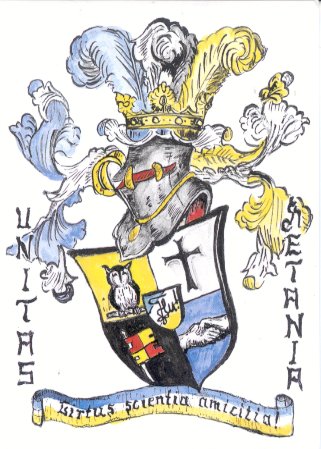
Ten representatives of The Academic Society Unitas Würzburg are to visit St. Stanislav’s Institution on Tuesday, 26th March 2019. Among them, we shall welcome also two alumni of The Diocesan Classical Gymnasium Marko Planinc and Jan Pintar who together with Pavel Orešnik have received a scholarship for undertaking the university studies in Würzburg. Irena Bolta, teacher of German at the DCG and Pavel’s class teacher, has been in charge of the link with Society Unitas since its very beginnings in 1997.
Since 1855 The Academic Society Unitas Würzburg has been there to assist science Catholic students and academics. In 1877 Archbishop Jeglič, the founder of St. Stanislav’s Institution, was accepted as member when on a study tour in Germany. He kept in touch with UNITAS also later when appointed the archbishop. Pre-war alumni dr. Marjan Zupančič, an UNITAS member as well, informed his fellow member about the reestablishment of Stanislav’s Institution in 1993. The society embraced the news enthusiastically, offering the possibility of university studies in Germany to one alumni of the DCG. This was Pavel Orešnik (1st generation), an attorney specialised in German transport, civil engineering and architecture law, with an office in Tettnang, Bavaria, Germany. The second alumni to benefit from the UNITAS generosity was Marko Planinc (10th generation), who finished studies of business informatics; presently Jan Pintar (18th generation) is studying social politics at Bayerische Julius-Maximilians Universität Wurzbürg.
We are happy to welcome all members, especially Mr Steimer, thanks to who alumni of DCG have had a chance to study in Würtzburg and has taken care of the constant financial support throughout the 22 years of fruitful common cooperation. /Lily Schweiger Kotar/
“Nech ten chram” to Wrap Up the Traditional Exchange of Three Slavic Gymnasiums
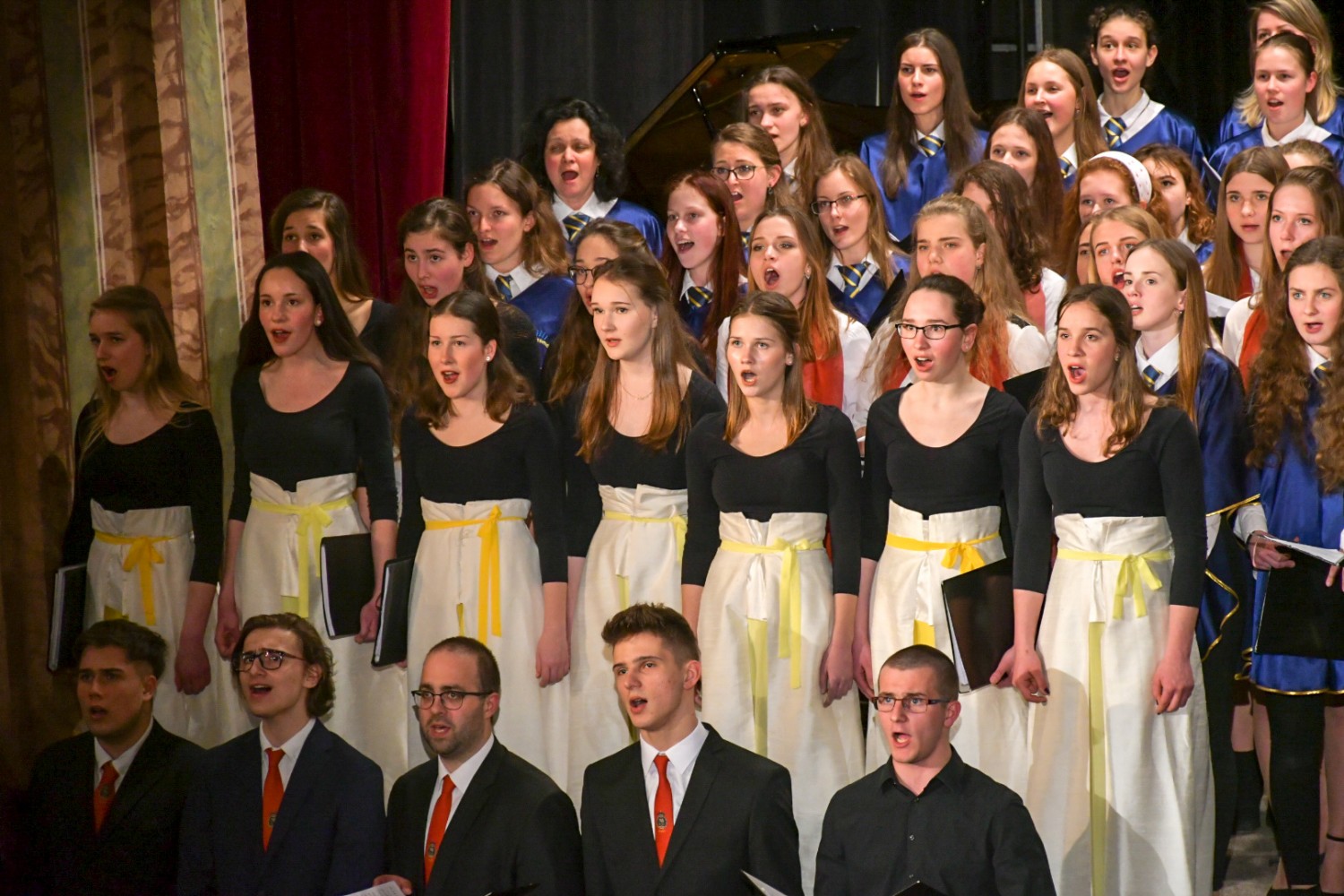
This is how one of the participants of the exchange experienced the second part of the stay in Trenčín: “On 20th March 2019 in the morning, the choir headed to the practice for the concert in the evening, whereas the linguistic group finished its posters and began designing models of the chosen architects’ famous buildings. The group that was studying Jože Plečnik was working on a model of the biggest cemetery in Ljubjana, Žale. After lunch we took a bus to a town called Hlohovec, where the choirs were to have a concert in the evening. While the Polish and Slovak choirs were practicing, our group visited the castle. We had a short tour of the building and the choir did not miss the chance to sing in the castle’s chapel. In the evening all three choirs performed and the Slovenes delivered an amazing performance. After the concert some students returned to their hosting families and others went back to the hostel where Mr. Zlobko, the school chaplain, held a mass.
On the following day all the choirs had a practice for the final concert and the linguistic group was given some time to finish the models and prepare presentations. Before lunch choirs gave a lunch concert for the students of the school in Trenčín and the linguistic groups presented their work. In the afternoon we had some free time and roamed the city centre, enjoying the sunny day. At six we gathered at the church for the final concert. All of the choirs sang beautifully and they wrapped up the meeting with the traditional Nech ten chram, when the joyous song was literally coming from happy heats. After dinner at school we had some free time and spent time in cafes in the centre. We returned to the hostel late at night and held a mass in honour of Rok’s birthday.
On Friday 22nd March 2019 we packed our bags and headed to school for a final mass where we sang togeter with our Slovak and Polish friends. After bidding them goodbye and thanking for the kind hospitality and great creativity days, we were homeward bound. /Eva Sedej, year 2/
At the end of the exchange an inspirational idea flashed Mr Zlobko’s mind: “Music is the language of love. If silence is the language of God in which He speaks to men, human’s response is music.”
Hori Takeaki to Visit Students of The Diocesan Classical Gymnasium
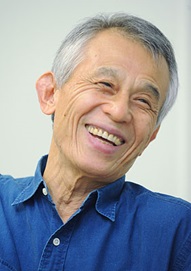
Hori Takeaki, a guest at the international PEN meeting in Bled, Slovenia, will deliver a speech for the students of the Diocesan Classical Gymnasium on 27th March 2019 at 10.40 a.m in the Jeglič Student Home.
Hori Takeaki is a professor, scientist and a haiku writer as well as an honorary vice chairman of PEN International. With his assistance, the Hiroshima and Nagasaki exhibition in Ljubljana has been set up to recall the memory of the atomic bomb victims and raise awareness of the danger of nuclear weapons. Mr Takeaki will talk to students about his poetic endeavors and they will read some of their own haiku poems. We are very much looking forward to the event. Welcome! /Lily Sch. Kotar/
The 20th Jubilee Singing – Language Exchange in Trenčín, Slovakia
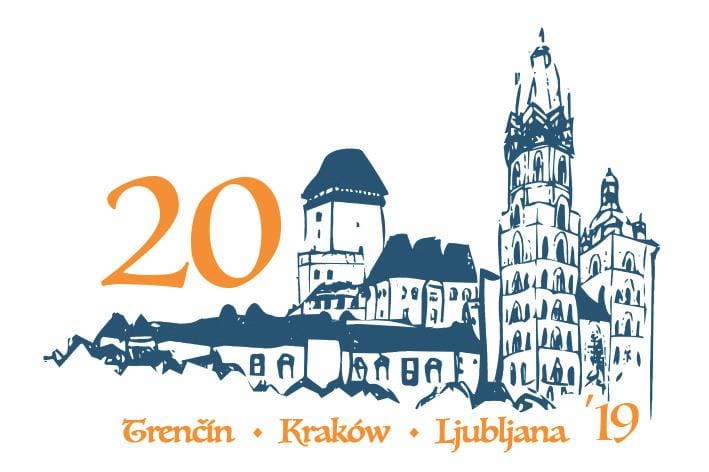
The traditional exchange with three Slavic Gymnasiums is taking place from 18th – 22nd March 2019. This year Piarist Gymnasium from Trenčín hosts students from Piarist Lyceum from Krakow, Poland and those from The Diocesan Classical Gymnasium, Ljubljana, Slovenia. Traditionally, students exchange their knowledge of singing as well as of all three Slavic mother tongues, namely Slovak, Polish and Slovene. This time St. Stanislav’s Youth Choir under the conductorship of Damijan Močnik represents the singing force of DCG.
This is how one of the participants experienced the first days in Trenčín. “After hours of driving and a short lunch break in Bratislava, we finally arrived at our destination. The choir had the first practice there, and members of the language group had a mass with our priest Martin Zlobko. Afterwards, we had dinner in the school, and some of the choir members left with host families, and the other went to the hostel. On Tuesday, we got up early and headed to school for breakfast. Having enjoyed a lesson of Slovak, the choirs had another practice, and the language group met with students from Poland and Slovakia. We talked about famous architects from our countries and designed posters in our native languages. In the afternoon we visited Trenčin Castle. We enjoyed the afternoon sightseeing the city and some free time there. In the evening we left for a nearby town where we attended the mass. The choir was singing and gave a short concert in the church. We spent a pleasant evening with our host families”. /Eva Sedej, year 2/